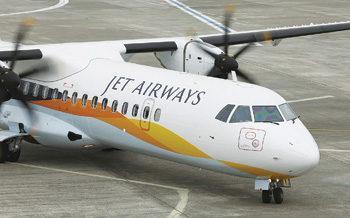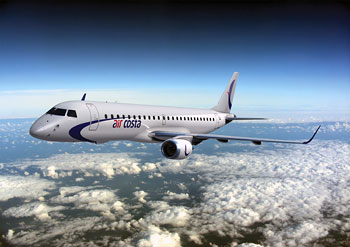Regional Connectivity Elements out of Draft Policy — Civil Aviation Ministry, India


- The Regional Connectivity Scheme (RCS) will come into effect from 1 April 2016.
- MoCA will target an all inclusive airfare not exceeding Rs 2500 per passenger, indexed to inflation for a one-hour flight on RCS routes.
- This will be implemented by way of:
- Revival of un-served or under-served aerodromes and airstrips.
- Concessions by different stakeholders.
- Viability Gap Funding (VGF) for scheduled commuter airlines.
- Cost-effective security solutions by BCAS and State Governments.
- Currently around 75 out of 476 airstrips/airports have scheduled operations. Revival of airstrips, depending on demand, as No-Frills Airports will be done at a cost not exceeding Rs 50 crore, mostly through AAI. Requirement of 12% project IRR will be relaxed for revival of these airports, wherever the airport is under AAI control.
- RCS will be made operational only in those States which reduce VAT on ATF at these airports to 1% or less.
- For Customs Duty SCA will treated at par with scheduled commercial airlines provided they do not undertake any charter carriage.
- State Government will provide free land and multi-modal hinterland connectivity (road, rail, metro, waterways, etc) as required.
- For 10 years from the date of commencement of flight operations under RCS:
- There will be no airport charges levied on SCA for their operations under RCS.
- Service Tax on tickets under RCS will be exempted.
- State government will provide police and fire services free of cost. Power, water and other utilities will be provided at substantially concessional rates.
- ATF drawn by SCA's from the Regional Connectivity Scheme (RCS) airports shall be exempt from excise duty.
- Viability Gap Funding (VGF) indexed to ATF prices and inflation will be provided for a particular route, on a competitive bidding basis if necessary, for a period of 10years from commencement of operation
- VGF will be shared between MoCA and the State Government in the ratio of 80:20.
- MoCA's share of VGF will be provided through the Regional Connectivity Fund (RCF).
- RCF will be funded by a levy of 2% on all domestic and international tickets from 1stJanuary 2016 onwards under Clause 5(2)(ab) of the Aircraft Act 193
- The RCF levy will be applied on all routes other than Cat IIA routes and RCS routes.
- Proceeds from auctioning of additional bilateral rights will go to RCF.
- The RCF will be collected and operated by AAI or any other entity identified by MoCA.
- SCAs will be provided easy options for entry into and exit from RCS.
Expert Comment — B. K. Pandey, Editor, SP's Airbuz

In the new Draft Civil Aviation policy, there is clearly a renewed effort by the Ministry of Civil Aviation to boost Regional Aviation . As it appears from the points listed, there are a slew of incentives provided to operators. The potential air traveller utilising Regional Aviation will enjoy the benefits of affordable air travel. However, a more comprehensive picture will only emerge after study of the new Draft Cvil Aviation Policy as also its final shape.
In the points listed, there a number of positive steps the government proposes to take. However, there are also some imponderables too that may cast a shadow on the success of the policy . For example, the provisions of sub-paras (e) , (g) and (i) involve state governments who have to cooperate fully and wholeheartedly without which Regional Aviation may not prosper in those states where the government fails to oblige. These provisions may well get bogged down in political conflict between the centre and the states. Success of the RCS will then depend on how effectively is the Central Govt able to get State Govts to cooperate and comply with the policy.





